
LongBow Micra LED flashlight
Review date: 8 February 2005.Last modified 03-Dec-2011.
The original one watt Luxeon Star super-LED, in combination with the slightly exotic CR123A-size photo battery, made possible a whole new kind of flashlight.
Really small, very bright, with reasonable battery life and a "bulb" that'd last a lifetime, and invariably made out of hard-anodised aluminium that makes them essentially bulletproof (well, provided you avoid mercury, anyway).
LED lights in general have been great news for anyone who wants a pocket-sized photon-shooter. They mean you can now get something the size of a Maglite Solitaire that actually, you know, works. But CR123-and-Luxeon lights are a whole other animal; they put the light output of your average full-sized three-cell household flashlights in something you can hide in your fist. And thanks to the LED, the beam's a lovely blue-white pool of light, not a ring-y uneven yellow mess.
These lights aren't perfect, of course. They're much more expensive than a supermarket flashlight. And, realistically, most regular flashlight users don't often, or ever, buy new bulbs, so they don't care much how long they last. And super-bright LED lights don't have great battery life, either; they use DC-to-DC converters to keep the lamp brightness pretty even as the battery goes flat, but that means you only get maybe one and a half hours at close to full brightness, then typically many more hours of better-than-nothing light.
That said, though, lights of this type are deservedly popular. The Arc-LS was the first to make it to something like mass production, but now there are some entries from the big brands (this plus this makes a CR123-plus-Luxeon light), plus some entertaining variations on the theme.
And here's another one.
LongBow's Micra increases the number of products of that name that you can have in your life to three (or, OK, more, if you want to be picky).
Basically, the Micra is not very different from the Arc-LS, and other later lights of this type. A bit more than 80mm long (3.2 inches), about 73 grams (2.6 ounces) in weight including its battery, and fitted as standard with a pretty well heat-sunk nominal one watt Luxeon LED (which can be driven to rather more than one watt, as long as it's kept cool...) and purpose-built fixed-beam optic that gives about a 20 degree beam width. That's wide enough to be useful when you just want to see where you're going, but narrow enough to light up stuff on the other side of the street more than adequately.
The Micra's aluminium body is pleasingly techno-pretty, with knurling on the back, and microgrooves on the middle (which has flats on either side that could be useful if you want to clamp the light to something), and a slot behind the lamp assembly (which might also be good for mounting purposes).
The flats are recessed from the outside diameter of the Micra, though, so it can still roll around on a table. Lights with exterior flats are better at staying where you put them, but also more likely to poke holes in your pockets.
The Micra sells for around $US70, which is a decent price for a light like this.
LongBow have, I'm happy to say, come up with some genuinely new and useful features to elevate the Micra above the (not very big) crowd.
Like, uh, this completely unnecessarily enormous box, shipping prices, for the increasing of, one.
The total hardware content of the box is shown above. One flashlight, one handy clip-on lanyard. The battery is included, though.
More practically, the tail-cap of the Micra has two threaded holes in it. The holes have a standard tripod mount thread, so you can screw the Micra onto any photo or video tripod in seconds, to turn it into a hands-free light.
Doing this with a full-sized tripod isn't the most practical thing in the world (actually, this is the end of a monopod, not a tripod, but you get the idea), but there are lots of super-cheap tiny "tabletop" tripods on the market, any one of which would work marvelously with the Micra.
Standard tripod screws, by the way, are 1/4 inch UNC (American Unified Coarse, dangerously-interchangeable with the old Whitworth threads). UNC nuts and bolts are standard hardware-store items in the USA, and not too hard to find elsewhere.
The Micra I got for review is the basic version, which has a twist-type switch; you tighten the tail-cap down to turn the light on. Out of the box the thread is quite stiff, but it loosens in use. There's an optional clicky tailcap switch that lengthens the light to about 3.6 inches, but lets you turn it light on and off more easily - and briefly flash it, if you like. The clicky version costs a bit more, and it only gives you the side tripod-mount hole, not the one in the middle of the end-cap. Both versions of the Micra have a flat end, so you can stand them on their tail for "candle mode".
Candle mode works well if you unscrew the nose of the flashlight and expose its lamp directly, because this is a bare Luxeon emitter which, without optics on top of it, gives a quite even almost-180-degree light.
Even without its optics, the Micra remains waterproof; the LED's terminals are potted in black resin, and there's a separate O-ring seal for the lamp assembly - which you can remove, if you like, to install after-market lamps and lenses and reflectors, many of which are available from your friendly local lunatic.
The Micra's battery bay and switch arrangement is conventional, but note the twin O-rings on the back of the light body. When it's not in candle mode, this light should be able to survive surprisingly deep immersion. The screw switch is pressure-safe, too; pushbuttons don't work very far underwater, because water pressure pushes them in, and then the water often gets in through them, one way or another.
Power and brightness
The Micra's optics are much like the Arc-LS's, so its beam looks much the same, too:
The square LED die gives beams from these kinds of lights a distinct shape, but it's only obvious if you shine the light on a flat surface.
The Micra is noticeably brighter than my Arc-LS, despite the fact that I've got an LSH-P, which is a special shiny premium version that would have cost me a lot more than a Micra would today - if, ah, I hadn't been given both of the lights for free, that is.
If you feed either light an absolutely tippy-top new battery, they'll give you rather more than their realistic "full" brightness. So I tried the Micra out with a battery that'd already had a few minutes of run time. The very middle of the beam delivered a brightness of around 680 lux, at one metre. That peak brightness was pretty hard to find, though; I think 600 lux is a more realistic figure for the whole central bright spot.
600 lux, though, is a lot. From the same battery, my Arc-LS only managed about 400 lux.
More brightness inescapably means more current draw. Through my multimeter - which adds resistance - the Micra clocked in a rather hard-to-pin-down current figure (thanks to questionable multimeter probe connections) somewhere between 800 milliamps and one amp, using this fresh battery.
This, again, is a lot, but even people who measured a Micra at 700 lux found it had a realistic 70 minute run time, so clearly the thing isn't starting at one amp and then rising to keep the output up as the battery goes flat.
Quality 123 cells (PDF datasheet) have about a 1.5 amp-hour nominal capacity into a weedy 100 ohm load; that means only a 30 milliamp starting current, falling as the battery goes flat. A light that starts around an amp and settles down to something a bit more sensible as the battery weakens will, indeed, give you a bit more than an hour non-stop.
Overall
The only thing I don't like about my review Micra, besides the silly big-box-small-light thing, is its twist switch. If you want the light on for a while at a time then it's not a problem; if you want to go underwater with your Micra, then it's a feature, not a bug. Everybody else, though, should definitely pay a bit more for the clicky switch. You're looking at $US80 to $US90 for this version from a reputable dealer.
This, of course, is quite a bit of money to spend on a flashlight; if it's that or paying the rent, then for Pete's sake get a five dollar light from the supermarket instead.
But the Micra is a great example of this kind of light, and looks as if it realistically could last you a lifetime, even if you're singularly unkind to it.
Recommended.
Review Micra kindly provided by LongBow.
LongBow lights are made by Light10, which has sites here and here.
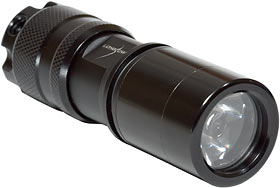
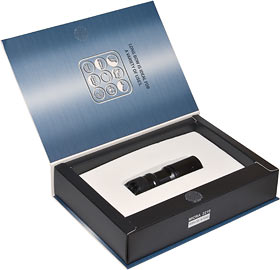
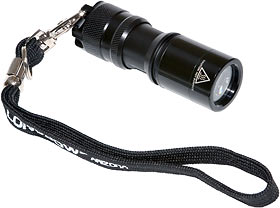
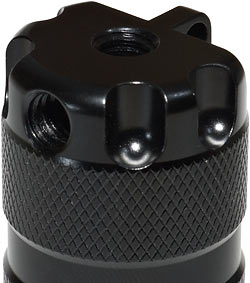
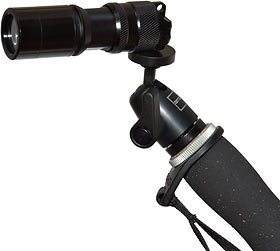
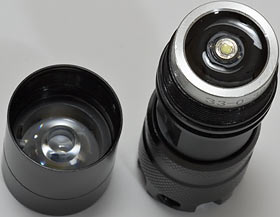
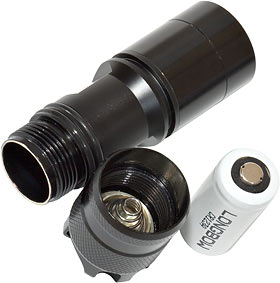
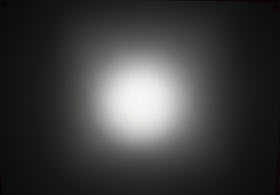

![[SecureWebs]](images/sw.gif)